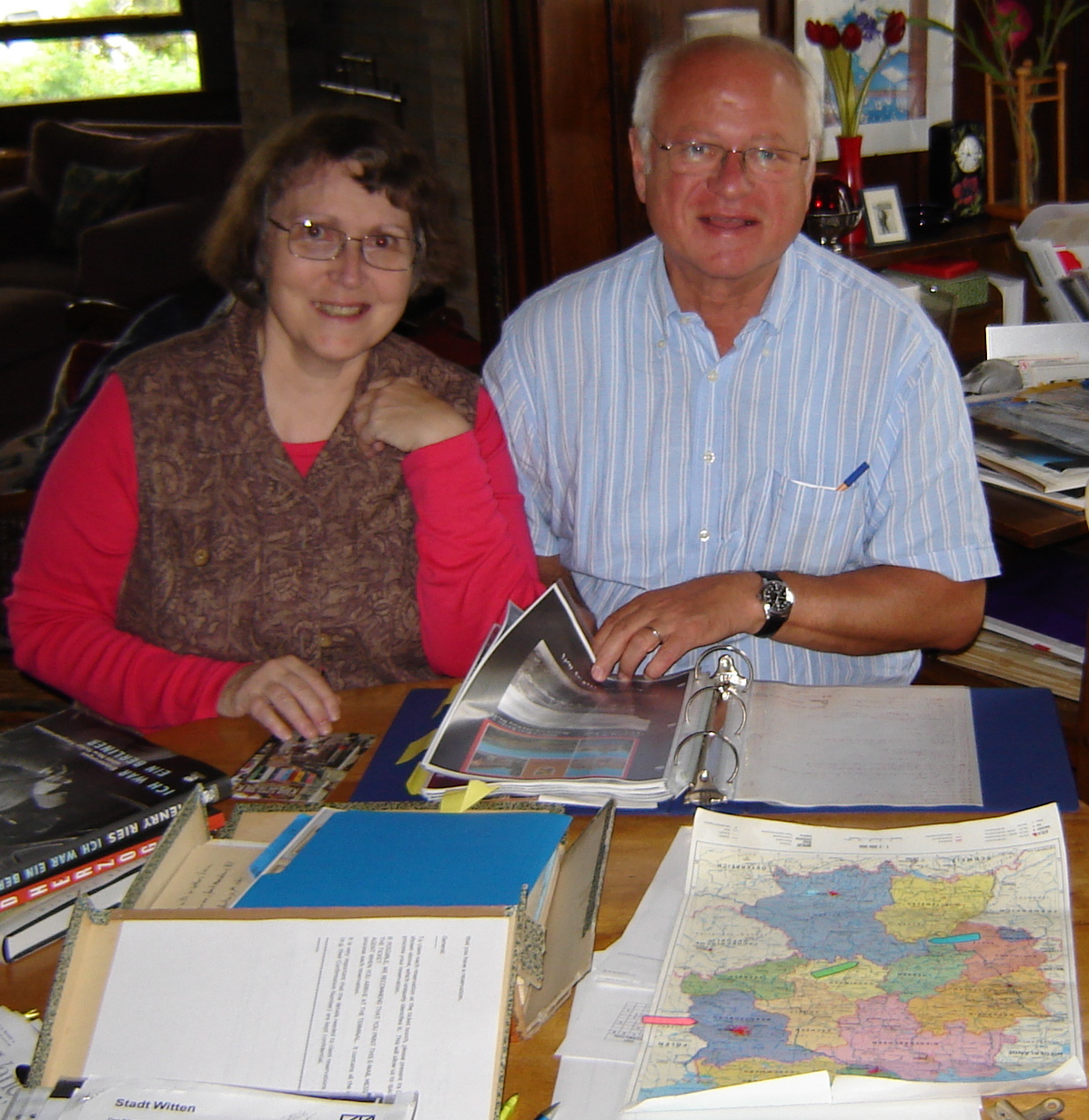Five years ago, I was asked by the Vancouver Holocaust Education Center to read a series of letters in German and summarize them in English. These letters were given to the Vancouver Holocaust Education Center Archives by Andrew Rosengarten, the son of Manfred Rosengarten, the author of the letters. What made the collection of letters special was that it was a four-year correspondence between Manfred Rosengarten, a Jew who was expelled from Themar as a teenager, and his non-Jewish friends, whom he had last seen in 1936. The correspondence began in 1983 and is due to a coincidence: an acquaintance of Manfred who was visiting Themar – the town was behind the Iron Curtain at that time – was asked by Manfred to take a photo of his birthplace. When she pursued this request, she met a man named Karl Saam, who remembered Manfred and asked him through the acquaintance to write to him. Manfred wrote and in turn asked his old school friends in his letter to write to him if they each wanted to share their experiences and feelings after World War II. As a result, a lively correspondence ensued.
At Manfred’s funeral in 1987, the rabbi said there was an “avalanche” of letters that crossed the ocean. Manfred wrote to his friends that he had buried his anger, and that he would much rather work toward mutual understanding before it was too late. He told in his letters about his life after he was expelled from Themar, and in return he received reports from his friends about their war experiences. Some of his old friends used the correspondence to process their feelings and wrote how it was for them to have lived as Germans in Nazi Germany. Manfred, thanks to his excellent memory, was able to remember exactly all the places and events in the town, and drew a detailed map of Themar as the town looked in 1936. It is fascinating how accurate this map is.
After Manfred’s death, the letters lay in a box for twenty years until I read and translated them in 2007. In doing so, I was so fascinated by the stories with the numerous details and the accompanying photo album that I decided to visit Themar myself. Before I left, I also found out that two of the letter writers were still alive and that the children of the other letter partners were willing to talk to me about their memories. On my trip I also met other people in Themar who told me about the town when there was still a Jewish community and Jewish life there.
So thus began a journey of discovery together. What started with a box of letters from a Jew in Themar became the story of a small but nevertheless important German-Jewish community in the years 1865 to the end of the 1930s. The Internet, of course, was a very big help in this project, as it made it much easier to contact the descendants of the 30 Jewish families who had lived in Themar before World War II. And they responded. I must add that without the cooperation of the descendants of the Jews from Themar, this website could never have been created.
This journey into the past has also brought together many other people. People who live in Themar today have contributed their memories, documents, photos and postcards; my friends from Germany, whom I knew from my student days, have given me and other researchers endless time. The bottom line is that there are people from all over Germany who willingly try to solve the riddles posed by the past. The students at the university I teach in history also contribute to this website with their talents and knowledge.
R. Lengemann agrees to supervise the project from the German side.
We are all connected through this “digital bridge” that the website has become, and hope that the connection to the past is at the same time a bridge for the present and the future. Please write to us. We very much welcome your questions, suggestions and comments.
for the present and the future. Please write to us. We very much welcome your questions, suggestions and comments.
[email protected] or [email protected]
www.sharonmeen.ca
Translated with www.DeepL.com/Translator (free version)